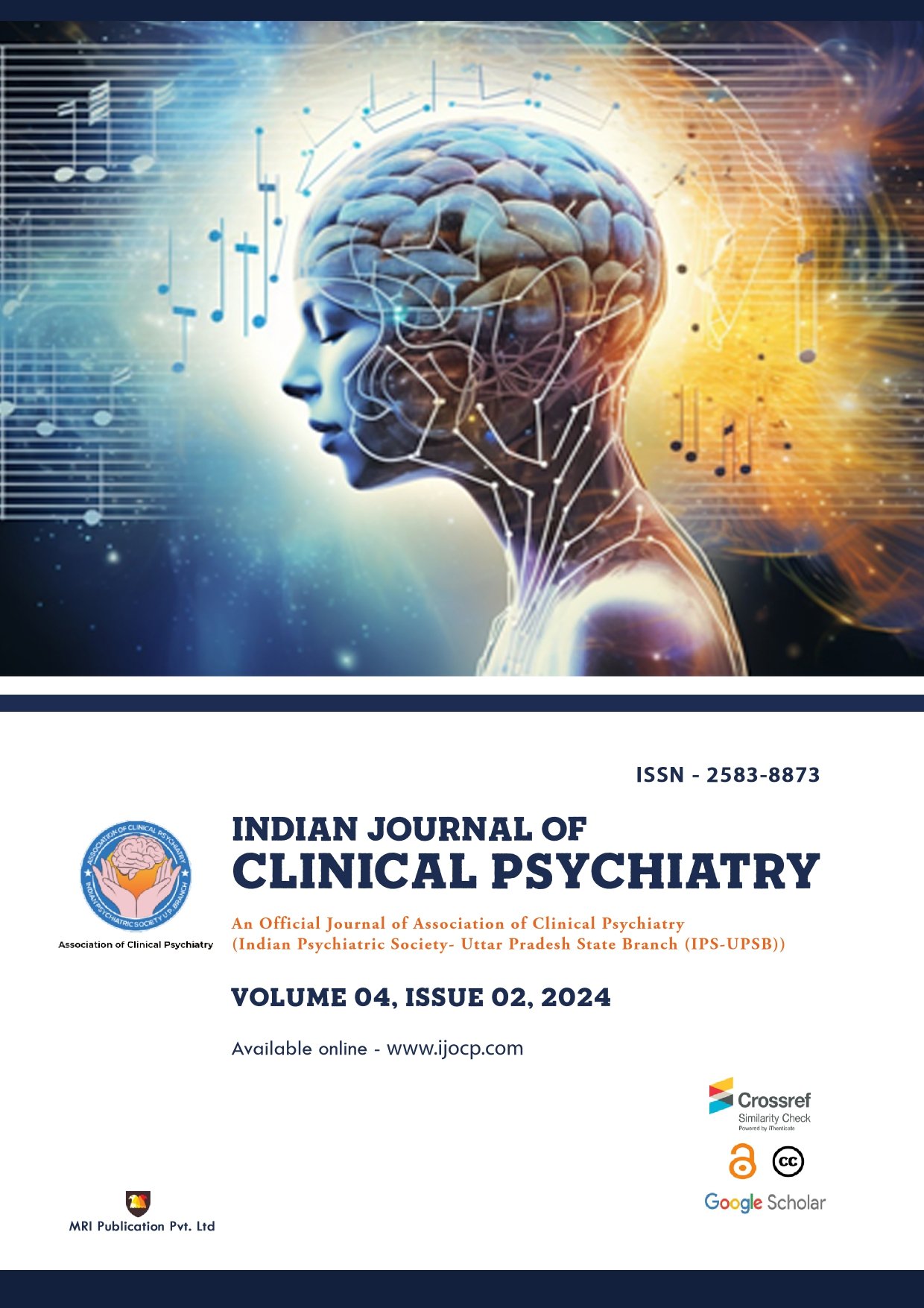Perceived Stress and Quality of Sleep in Patients on Hemodialysis
Downloads
Published
DOI:
https://doi.org/10.54169/ijocp.v4i02.133Keywords:
Hemodialysis, Perceived stress, Quality of sleepDimensions Badge
Issue
Section
License
Copyright (c) 2024 Madhavi Kodali, Therissa Benerji, Rashmitha Vetapalem, Varun Kumar Bandi, Krishna Mohan Parvathaneni

This work is licensed under a Creative Commons Attribution-NonCommercial-NoDerivatives 4.0 International License.
Background: Chronic kidney disease remains a prevalent global health concern, necessitating effective renal replacement therapies such as hemodialysis for end-stage renal disease (ESRD) patients. Beyond the physiological challenges, these patients often grapple with profound psychosocial burdens, particularly concerning stress perception and sleep disturbances. In recent years, the intricate relationship between perceived stress and sleep quality among patients undergoing hemodialysis has garnered substantial attention within the medical community.Abstract
Methods: About 38 participants above 18 years of age with end-stage renal disease on maintenance hemodialysis of ≥3 months, undergoing hemodialysis at least two times a week, were taken as subjects for the study. The perceived stress scale, Pittsburgh sleep quality index, and insomnia severity index were used to assess perceived stress, quality of sleep, and insomnia, respectively.
Results: Among the participants, 60.5% reported high perceived stress, while 34.2% had moderate stress. Approximately half of the study sample suffered clinically significant insomnia of moderate severity. A significant association was observed between perceived stress and insomnia ((p = 0.04), poor sleep quality, and clinically severe insomnia (p = 0.0001) in our sample of patients on hemodialysis.
Conclusion: Our results highlighted the complex interplay between stress, sleep quality, and insomnia among hemodialysis patients emphasizing the need to focus on a more comprehensive assessment while exploring interventions to enhance the overall well-being and quality of life for this specific patient population.
How to Cite
Downloads
Similar Articles
- Pawan K Gupta, Manu Agarwal, Shweta Singh, Pronob K Dalal, Vivek Agarwal, Anil Nischal, Bandna Gupta, Adarsh Tripathi, Amit Arya, Pooja Mahour, Sujita Kar, Deepanshu Mishra, Vishal Gupta, Predictors of Perceived Stress Among Healthcare Workers During COVID-19: A Cross-sectional Study from North India , Indian Journal of Clinical Psychiatry: Vol. 2 No. 01 (2022): Indian Journal of Clinical Psychiatry
- Menon, Natarajan Varadharajan, Immune-inflammatory Pathways in Somatoform-Disorders : A Theoretical Update , Indian Journal of Clinical Psychiatry: Vol. 1 No. 1 (2021): Indian Journal of Clinical Psychiatry
- Varshini Ragupathy, R. Neelakandan, Effectiveness of Art Therapy in Improving Quality of Life Among Cardiac Patients , Indian Journal of Clinical Psychiatry: Vol. 4 No. 02 (2024): Indian Journal of Clinical Psychiatry
- Kritika Chawla, Bandna Gupta, Comparative Study of Stress Response to COVID-19 and Coping in Patients of Depression and Anxiety Disorder , Indian Journal of Clinical Psychiatry: Vol. 4 No. 01 (2024): Indian Journal of Clinical Psychiatry
- Chetan Choudhary, Rishabh Tripathi, Jishi Joshi Joseph, Kalpesh Gaur, Jitendra Jeenger, Longitudinal Effects of Escitalopram on Quality of Life in Drug-Naive Generalized Anxiety Disorder Patients: A Six-Month Prospective Study , Indian Journal of Clinical Psychiatry: Vol. 4 No. 02 (2024): Indian Journal of Clinical Psychiatry
- Md Adil Faizan, Bikkasani U.P. Lakshmi Krishnarao, Shaik Naseema, Sri Divya Reddy Kandhi, Raghuram Macharapu, Psychiatric Comorbidity Among Dermatology Patients: A Study at a Tertiary Care Hospital in Khammam, Telangana, South India , Indian Journal of Clinical Psychiatry: Vol. 4 No. 02 (2024): Indian Journal of Clinical Psychiatry
- Anil K Agarwal, The Art of Writing Prescription , Indian Journal of Clinical Psychiatry: Vol. 4 No. 01 (2024): Indian Journal of Clinical Psychiatry
- Sneha Agarwal, Vivek Agarwal, Dimensions of Spirituality and Mental Well-being during the Pandemic: A Narrative Review , Indian Journal of Clinical Psychiatry: Vol. 2 No. 02 (2022): Indian Journal of Clinical Psychiatry
- Udbhav Tiwari , Mona Srivastava, Women Mental Health in Context to the Social and Geopolitical Perspective , Indian Journal of Clinical Psychiatry: Vol. 2 No. 01 (2022): Indian Journal of Clinical Psychiatry
- Riya Jain, Sayanti Paul, Arghya Pal, Prevalence of Premenstrual Syndrome in Undergraduate MBBS Students and their Work-related Quality of Life , Indian Journal of Clinical Psychiatry: Vol. 3 No. 01 (2023): Indian Journal of Clinical Psychiatry
You may also start an advanced similarity search for this article.


